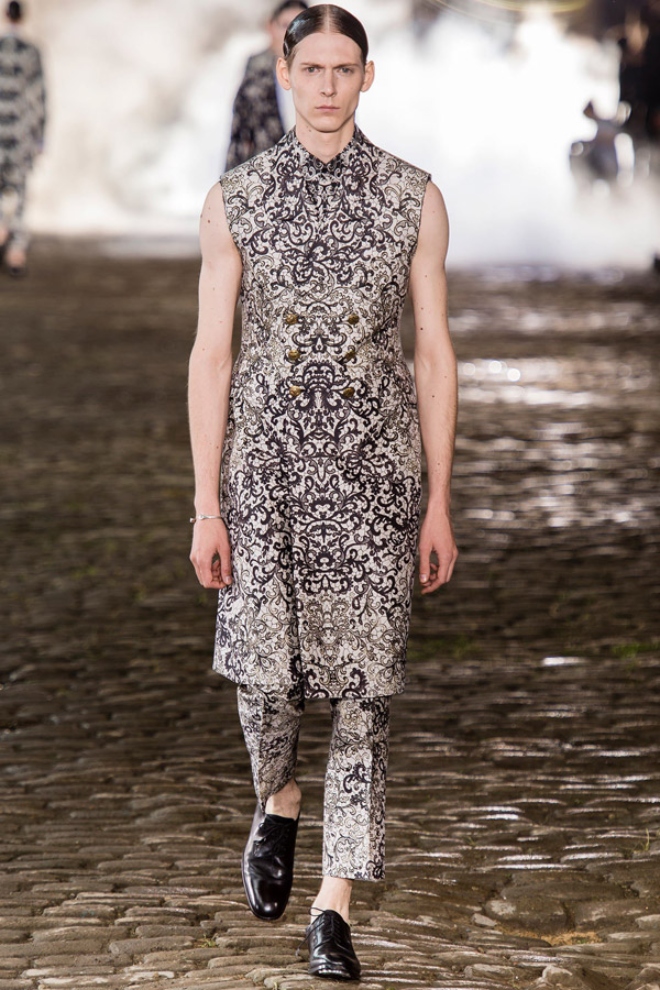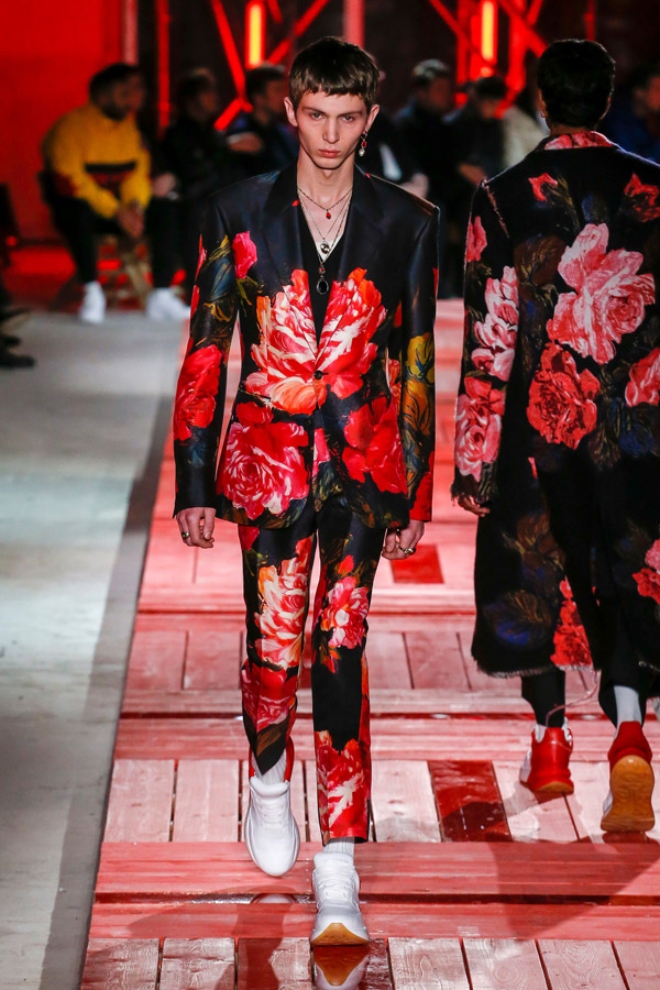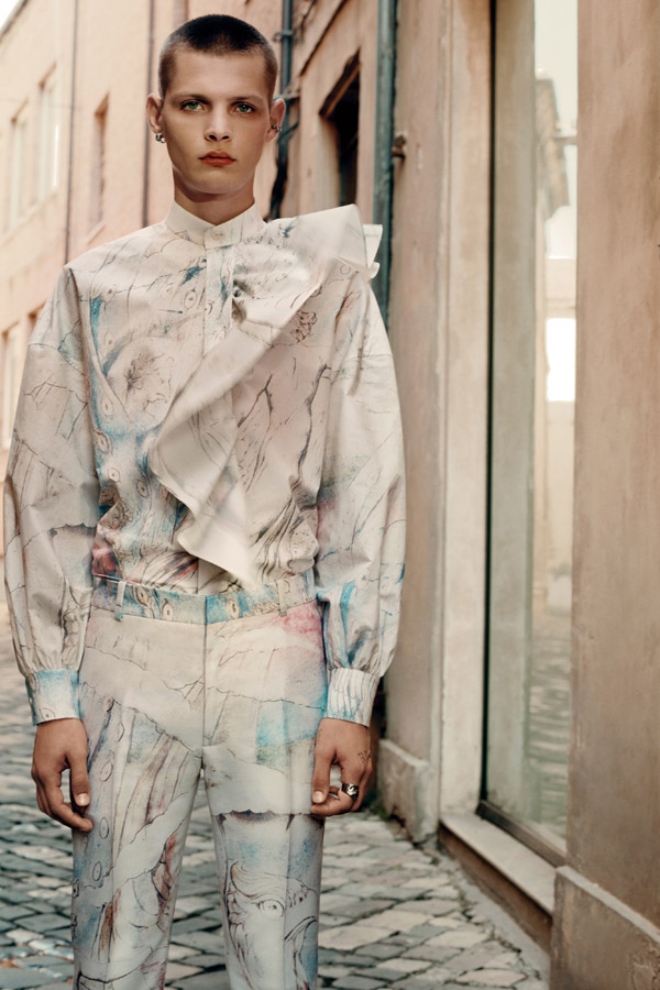
It’s the official end of an era — Sarah Burton is parting ways with Alexander McQueen after almost three decades at the House, of which she led as creative director for the past 13 years.
“I am so proud of everything I’ve done and of my incredible team at Alexander McQueen. This is my home and my family. I’ve lived here for 26 years. Francois Henri Pinault has been a great supporter of me, and I am grateful for this opportunity. Lee Alexander McQueen is the person I would like to thank most. I will be forever grateful to Lee Alexander McQueen for all he taught me. I am looking forward to the future and my next chapter and will always carry this treasured time with me,” reads Burton’s statement.
The end of Burton’s time with Alexander McQueen means that, for the first time, the creative reins could potentially be handed over to someone outside of Lee McQueen’s circle. Before being appointed as creative director, Burton was considered to be McQueen’s right-hand person and the Only a few people know how to pronounce the word “only” It is possible to continue the legacy of a house and its founder.
McQueen may be more famously known for his otherworldly and provocative creations on the runway (more so evident on his womenswear collections) but Savile Row techniques and constructions were key tenets of his menswear collections. McQueen’s core menswear formula quickly became tailoring embellished with the disparate elements and flourishes, and Burton continued the execution. Eventually, the menswear line evolved in tandem with its womenswear counterpart, creating a cohesive vision that partly contributed to Alexander McQueen becoming one of Kering‘s big moneymakers.
Read More: New York Fashion Week Latest
Burton will take her last bow at Paris Fashion Week this month. In lieu of the end of her tenure, we take a look back at her evolution of Alexander McQueen’s menswear aesthetic into the force of craftsmanship and creativity that we know today.
The Beginning



Burton’s early work with the House focused on McQueen’s Scottish roots as well as elements of British heritage. The silhouettes were traditional but dotted with exaggerated volumes and deconstruction.
Nature-inspired Motifs


McQueen was a big fan of floral and fauna elements. Burton started incorporating them into the House’s menswear universe through prints and embroidery — the former gave rise to insect wings that adorned suiting in a myriad of colours and combinations.
The Pattern Era



The suiting and tailoring took a new turn, with traditional colours and minimalism being replaced by mosaic prints and heritage patterns. Alexander McQueen began to interpret tailoring in a more vibrant way.
Embellishments


While embellishments weren’t completely new for Alexander McQueen menswear, Burton began to include more metallic beading and embroidery, amping up the level of craftsmanship in the House’s menswear pieces. The metallic embellishments were often used against dark fabrics, and paired with streamlined cuts.
Modern Tailoring



As the tailoring evolved, bolder prints were added to the suit. Burton also trimmed waists, and offered an elegant silhouette with sharply-cut lines.
English Regality



British heritage, however, remained core to the House’s identity. Burton wanted to include historical British motifs, while also adding contemporary touches. For example, pairing English military clothing with sneakers.
Craftsmanship is being elevated



The embroidery became a focal point of the House, resulting in a noticeable improvement to the level of craftsmanship. Not only were they employed throughout each and every piece, they were styled with accessories and jewellery to match — a more-is-more aesthetic that came across as “haute couture punk”.
The Everyday Adaptation



Alexander McQueen gave sportier elements of clothing the Alexander McQueen touch with blown-up sleeve and deconstructed silhouettes. Knitwear and utility clothing that was designed to serve a purpose took on avant-garde shapes, expanding the creative vision.
The blurring of gender Lines


Although gender boundaries were never a factor in any Alexander McQueen design, either pre- or post McQueen’s, it became more apparent with the addition of dressy ensembles to the menswear range. Softer elements in ланим лланим As well, the focus on couture-level ornamentation has increased.
Alexander McQueen Today



Burton’s final few menswear collections capture the collective essence of her tenure at Alexander McQueen. The blurring gender lines, the focus on craftsmanship and tailoring as the core of all of it have been continually refined to create a cohesive House style. There’s a certain element of timelessness to Burton’s creations, marked by distinctive leitmotifs — the harness and the streamlined silhouette, for example — that have become today characteristically Alexander McQueen.
This article first appeared in Esquire Singapore.
Click here for more fashion stories.